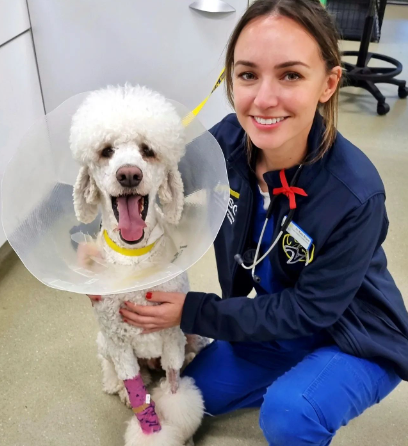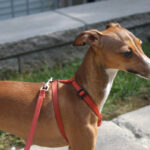Doberman Pinschers are an energetic and athletic breed that require sufficient daily exercise to remain physically and mentally healthy. As a large working breed originally developed for protection and law enforcement roles, Dobermans need more than just a short daily walk to meet their exercise needs. Providing adequate outlets for their energy is key to having a happy and well-adjusted Doberman Pinscher. In this article we talk about Doberman Pinscher Exercise Requirements-Meeting Their Physical Needs.
Table of Contents
How Much Exercise Does a Doberman Pinscher Need?
On average, a healthy adult Doberman Pinscher will need 60-90 minutes of vigorous exercise per day. Puppies and adolescents (up to 18 months) should receive at least 30-45 minutes. This exercise can be broken up into multiple sessions, but should include activities that allow them to run, play, and fully exert themselves.
Ideally, at least 30-45 minutes of a Doberman’s exercise time should involve aerobic activity that significantly elevates their heart rate, such as running, biking, swimming, or playing fetch. The remainder can be made up of shorter bursts of activity interspersed throughout the day. However, solely doing short walks on leash will not sufficiently tire out these athletic dogs.
In addition to cardiovascular exercise, Dobermans need mental stimulation and opportunities to explore environments outside of the home. Exposure to different sights, sounds, and smells helps prevent boredom that can lead to destructive behaviors. Obedience training, scent work, agility courses, and interactive toys are great supplemental activities as well.
Best Types of Exercise for Dobermans
There are many great ways to exercise a Doberman Pinscher to meet their high activity demands:
- Long runs or jogs while on leash – Dobermans make excellent running companions and most will thrive going on extended jogs of 60-90 minutes. Always use a secure harness designed for running versus a collar alone to prevent neck injuries.
- Playing fetch or frisbee – Their athleticism and drive make them well-suited for repeatedly chasing balls and frisbees over long distances. An automatic ball launcher allows the dog to continuously run after balls until tired out.
- Hiking/backpacking – Their endurance makes them a great hiking buddy. Going on long hikes allows them to expend energy while exploring new sights and smells. Use a backpack designed for dogs to provide extra resistance.
- Swimming – Many Dobermans love the water. Swimming is an impact-free cardio workout that utilizes different muscle groups. Always monitor around water and use a dog life jacket if needed.
- Agility training – Dobermans tend to excel at canine sports like agility that test their speed, coordination, and willingness to work with a handler. The mental and physical challenge is very rewarding.
- Interactive toys – Puzzle feeders, treat-dispensing balls, rope toys, and flying discs provide physical and mental exercise. Rotate different interactive toys to prevent boredom.
Tips for Exercising Doberman Pinschers
When exercising a Doberman Pinscher, there are important considerations to ensure a safe and rewarding experience:
- Always use a secure collar or harness designed for athletic dogs to maintain control and prevent escape. Slip leads are also great for giving them extra freedom to run and play while maintaining your grasp.
- Carry plenty of fresh water and take frequent hydration breaks to prevent overheating. Dobermans are susceptible to heat injuries. Avoid intense exercise in excessively hot/humid weather.
- Watch for signs of fatigue, limping, or reluctance to continue, which are indicators to stop and rest. Injuries can occur if an overly tired dog is pushed to continue.
- Play fetch/frisbee on soft grass versus hard pavement whenever possible to cushion joints and prevent toe injuries from abrupt stops and turns.
- Introduce new exercises gradually over several weeks to condition muscles and ligaments so they can handle the additional demands without strain.
- Engage in cross-training and rotate various activities from running to swimming to hiking to provide full-body conditioning while avoiding repetitive stress injuries from doing the same motions day after day.
Exercising a Doberman puppy requires additional precautions to protect growing bones and joints. Avoid forced running or jumping until at least 18 months old. Focus instead on free play, exploring new environments, basic obedience, and introducing agility equipment at low heights.
Failing to meet the exercise requirements of a Doberman Pinscher can contribute to a range of behavioral issues from aggression and destructiveness to hyperactivity, anxiety, and non-stop vocalizations. A tired Doberman is a happy, well-adjusted Doberman! Providing adequate physical and mental stimulation is essential to having a pleasant coexistence.
The high activity demands of the Doberman Pinscher are often initially underestimated, but are imperative to understand before committing to one of these energetic working breeds. While excitable and intense, a Doberman can make for an exceptionally loyal and satisfying companion for an active owner able to fully meet their needs. The effort put into exercising them pays off tremendously in the wonderful relationship built through all those adventures together. I sincerely hope you find this “Doberman Pinscher Exercise Requirements-Meeting Their Physical Needs” article helpful.

Dr. Kate Bruce is a highly experienced veterinarian with a Master’s degree in Veterinary Medicine and over a decade of expertise in animal behavior and holistic pet care. She combines traditional and modern practices to offer exceptional advice on pet health and wellness. Explore more at petsconsultancy.com and follow her on Instagram for expert tips.









